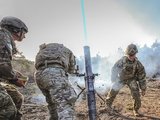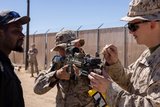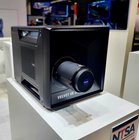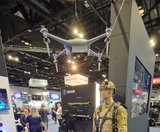Cubic tailors mortar simulator for the US Army
The company’s mortar trainer received improvements based on soldier’s feedback.
The US Office of Naval Research (ONR) has demonstrated new training technology at the Fleet Integrated Synthetic Training/Testing Facility (FIST2FAC) on Ford Island, Hawaii, the US Navy announced on 11 April.
FIST2FAC demonstrates, tests and develops simulator training technology that combines live-action exercises with virtual adversaries and assets. The facility can replicate situations involving helicopters, aircraft carriers, non-lethal and lethal weapons according to the navy.
During the demonstration, sailors on a virtual ship were set up against several fast-attack craft in waters crowded with merchant traffic. They determined the hostile boats and engaged them with machine-gun fire from a virtual helicopter and the ship itself.
The sailors operating the machine guns wore augmented-reality glasses, and participants on the destroyer and Ford Island experienced degraded video streaming, radar and communications to mirror the effects of enemy jamming communication signals.
Terry Allard, head, warfighter performance department, ONR, said: ‘This is the future of training for the navy. With simulation, you can explore endless possibilities without the expense and logistical challenges of putting hundreds of ships at sea and aircraft in the sky.’
Glenn White, integration and transition manager for the project, ONR, said: ‘FIST2FAC was created in response to an urgent need for a more portable way for ships to train in any given operating area. It allows sailors to 'train like they fight' by presenting realistic forces in a visual, tactical and operational environment.’

The company’s mortar trainer received improvements based on soldier’s feedback.

The company will operate in two new locations in the coming years to better support US services.

This type of tool provides more realistic training easing the incorporation of new scenarios that accurately represent the threats of the battlefield.

The Engineering Corps has been conducting individual instruction using FLAIM Systems’ Sweeper and should start collective deployments in 2025.

The next-generation platform is motion-compatible and can be used in OTW and NVG applications.

The system can be used to prepare soldiers for both drone offensive operations and CUAS missions.